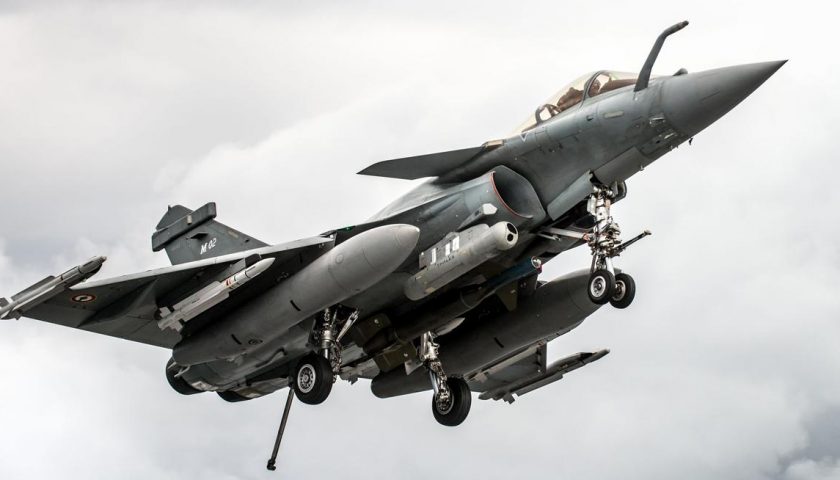To say that the FCAS new generation combat aircraft program, which brings together France, Germany and Spain, is today on a downhill course would be an understatement. After several episodes of tension about industrial sharing between Paris, Berlin and Madrid, the program is now on hold in the face of the impossible agreement that Germany and Airbus Defense & Space are trying to get Paris and Dassault Aviation to accept, and which would oblige the French aeronautical group to share the piloting of the first pillar concerning the design of the Next Generation Fighter, or NGF, with its German counterpart. For several weeks now, the situation is totally frozen, Eric Trappier, CEO of Dassault Aviation, constantly multiplying statements to the media to let it be known that his group would make no additional concessions to Airbus DS. The deadly trajectory followed by the program seems to have even reached Berlin, since according to a report by the German Ministry of Defense, the German authorities would be ready to give up the FCAS programme, in view of the deep divergences of which it is the subject.
Note, in this regard, the extreme discretion of the French authorities around this subject. If it is true that the executive probably has many subjects to deal with today, it is nonetheless true that the FCAS program, like its heavy armored counterpart the MGCS, are above all emanations from a political will shared between Emmanuel Macron and Angela Merkel, the first in order to give substance to his ambition for European Defense, the second as a way out of the difficulties anticipated for Germany following the arrival of Donald Trump at the White House in 2016. Since then, the context has changed profoundly, since Joe Biden replaced Trump and relaunched trans-Atlantic cooperation and the central role of the United States within NATO. As for Emmanuel Macron's repeated overtures in favor of a Europe of La Défense, they have all remained dead letters among his European neighbors. Only the FCAS and MGCS programs remain to support this ambition, even though they are now confronted with certain industrial, operational and doctrinal realities, admittedly perfectly identified for a long time, but which today are no longer offset by the will strong policy of the Macron-Merkel couple.

In any case, with the more than gloomy future that is emerging for the FCAS, it is difficult to see how a politically weakened Emmanuel Macron and an Olaf Scholz more Atlanticist than ever could invest in saving it, which will not work. not without posing significant challenges for the French defense industry, but also and above all for the country's air and naval forces, while a new technological arms race has begun. Certainly, for Dassault Aviation, the Rafale has the development potential to hold the line for several decades. However, and without doubting the fact that such a hypothesis would suit the industrialist and its shareholders perfectly while the order book of the Rafale is full for 10 years, limiting ourselves to iteratively evolving the device in the years to come could lead to sclerosis of the know-how and the competitive performance of this entire critical sector for the economy and as for National Defense . In this context, 3 hypotheses can be studied in order to respond to these industrial, technological and security challenges: the design of a Super-Rafale, that of a Mirage NG, as well as a reboot of the FCAS with other partners, European or not.
The SuperRafale : a transitional hunter
Le Rafale is a formidable combat aircraft, and its export success is a perfect demonstration of this, particularly in the face of aggressive and attractive offers from US industries with its F-35, F-16V and F-15EX. Beyond its advanced performance and unique versatility on the market, the Rafale shines above all by its ability to evolve, to the point that the first Rafale F1 delivered to the French Navy in the early 2000s were upgraded to the F-3R omnirole standard, equipped with the EASA RBE2 radar and the Meteor long-range Air-Air missile, and they will even be worn, in the future, towards the F4 standard and its capabilities encroaching on the 5th generation. However, the current conception of Rafale begins to reach its limits, this having led Dassault to design the F4 evolution in two standards, one for aircraft from previous batches, the other for new aircraft, so as to have new evolution capabilities at its disposal. 'future. This principle could be extended as was the case for the Gripen E/F with respect to the Gripen C/D, the F/A-18 E/F Super Hornet with respect to the Hornet, or the Super- Standard vis-à-vis the Standard, namely to design, in the relatively short term, a new Rafale adapted to future needs, in particular those towards which the Rafale current will not be able to evolve.


75% of this article remains to read,
Subscribe to access it!
The Classic subscriptions provide access to
articles in their full version, and without advertising,
from 6,90 €.
Newsletter subscription
Register for the Meta-Defense Newsletter to receive the
latest fashion articles daily or weekly


[…] it appeared that this alternative would be based on a new and very promising couple, combining a Rafale redesigned and designed Super-Rafale, and a stealth combat drone from the program […]